OddCameras.com
Sawyer's View-Master Personal Stereo Camera
View-Master
is a special-format stereoscope with its corresponding View-Master
"reels", thin cardboard disks containing 7 stereoscopic pairs of
small color transparecies which give 3-D views. It was trademarked, manufactured and sold by Sawyer's.
The
View-Master system was introduced in 1939, shortly after the invention
of Kodachrome color film. Mostly tourist attractions and pictures
intended for children were sold. In 1951 Sawyer's purchased Tru-Vue,
its main competitor. This takeover brought them Tru-Vue's licensing
rights to Walt Disney Studios.
The Sawyer's View-Master Personal
Stereo Camera was released in 1952. It allowed users to make their own
View-Master reels. It was successful from the beginning, but the line
was discontinued ten years later.
The View-Master company was
sold to GAF in 1966. They continued the reels and viewers. GAF sold the
company in 1981. It was then sold and merged several times, over Tyco
and Matell it became finally part of the Fisher-Price group. They
stopped production in 2008.
The camera uses 35mm slide film. A
36 exposure film gives 72 pairs of stereoscopic photos due to the small
size of the pictures. Set to "A" the camera uses the lower part of the
film until the film is completely wound out of the cartridge. The
camera has then to be switched to "B". This shift the systen to the
upper part of the film and inverses the winding. Step by step or photo
by photo the film is rewound into the cartridge.
As meters were
not yet common in the 50s, the camera has the so-called
"Expo-sure" metering. It' not true metering, but it gives very good
results. If you adjust the f-stop and/or shutter speed, the dials will
show you what conditions those settings will be good for, i.e. sunny,
cloudy, etc... ISO is taken into account as well as winter and summer.
This works astonishing well.
The slides are mounted in personal
reel blanks, they are first punched out with the special slide cutter.
Then, using the reel inserter tool, the chip is inserted into the reel.
Empty reels are difficult to get.
Size: 154 x 86 x 53 mm (W x H x D)
Weight: 654 grams without case
Image Format:12.90 x 11.90 mm (W x H)
Lenses: View-Master Anastigmat, 1:3.5/25 mm
Aperture: f/3.5 to f/16 (continous)
Fixed focus
Shutter: Mechanical guillotine type in front of the lenses, cocked with film transport
Shutter Speeds: 1/10 - 1/100 sec. (continous), B
Some pictures:
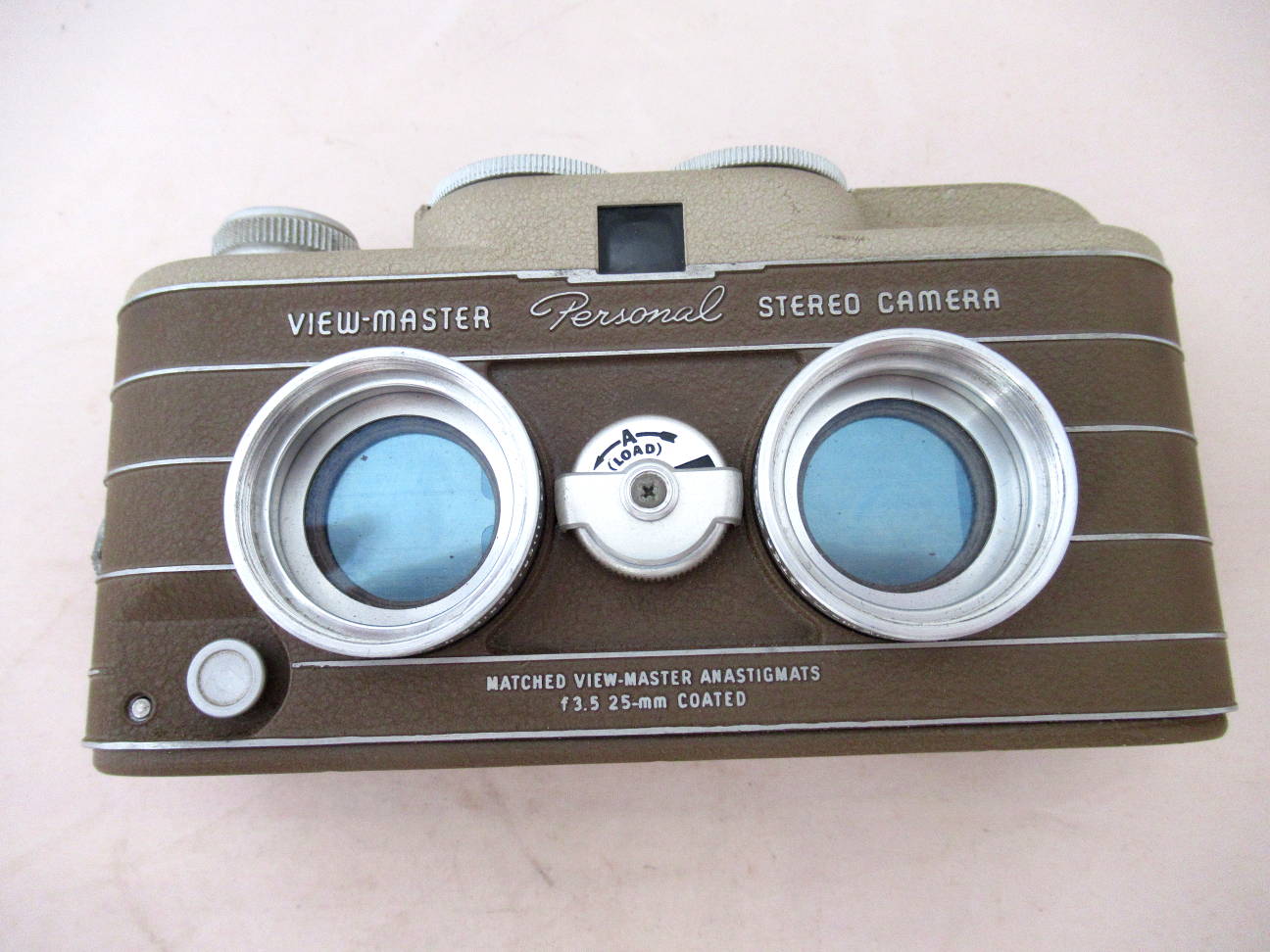
Camera front. Camera set to "A". The shutter button is near the bottom to the left.
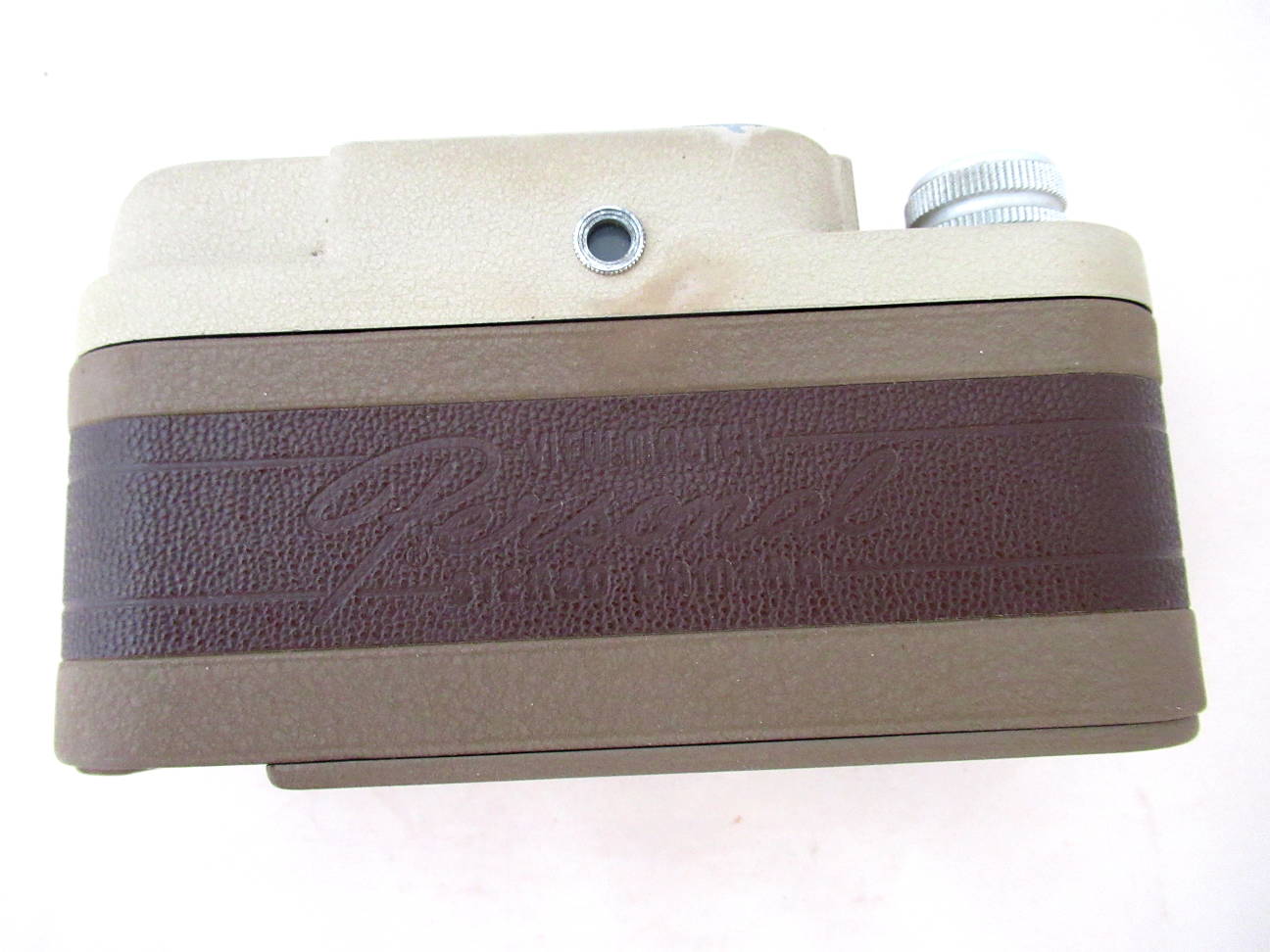
Camera
back. Viewer.
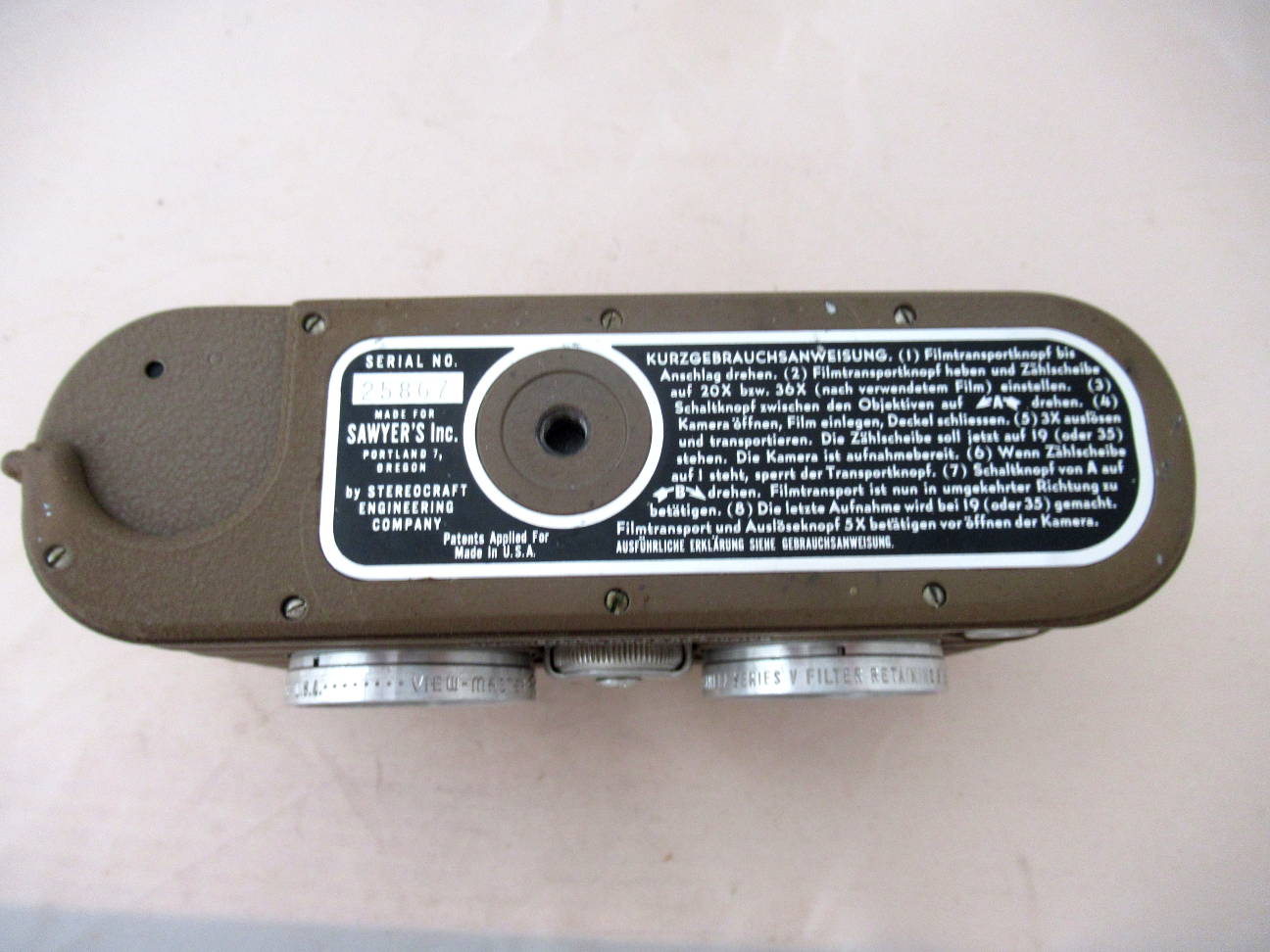
Camera bottom. Short instructions in German. Tripod socket.
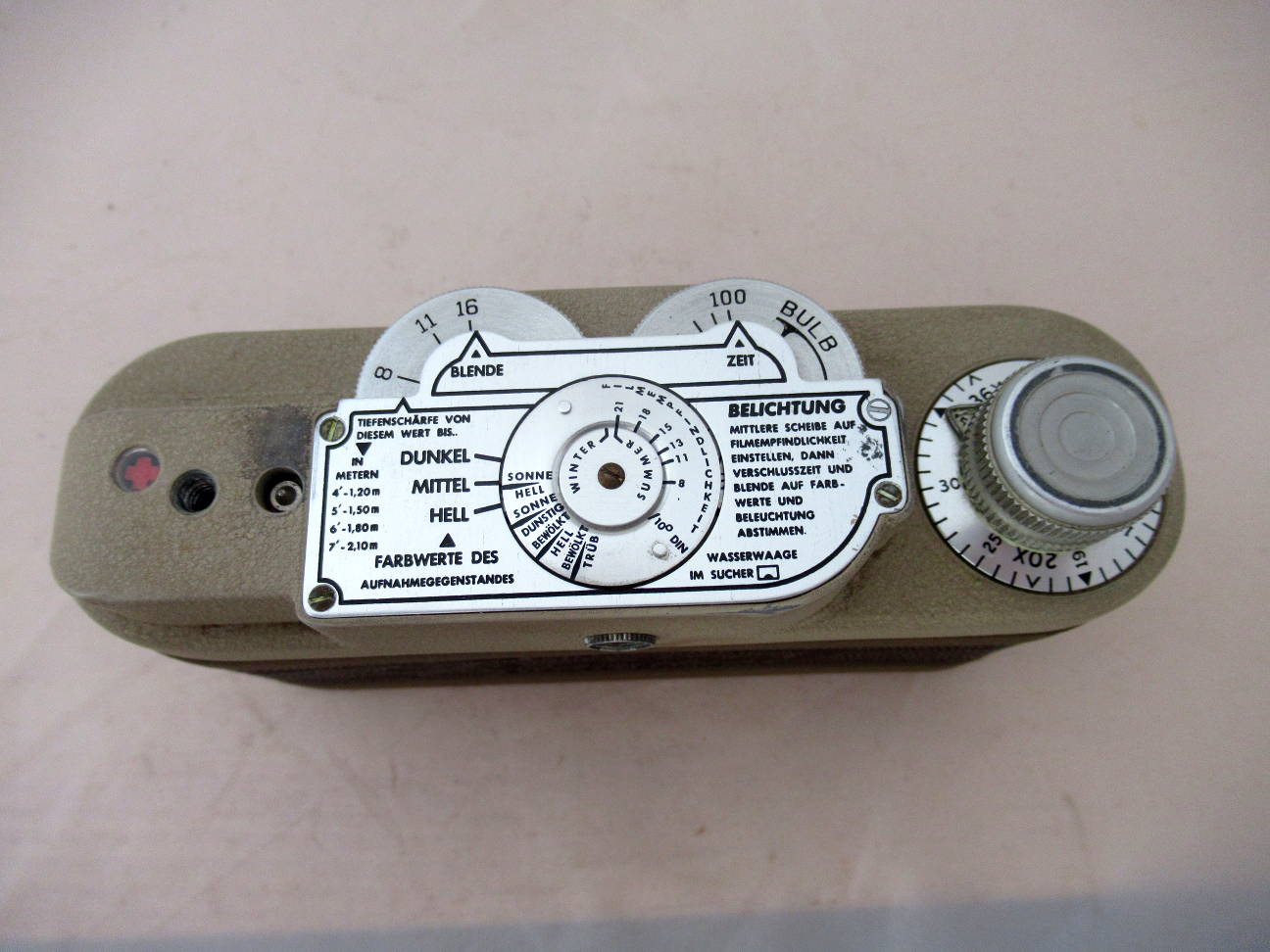
Seen
from above. The exposure system. ISO setting in the middle, slightly
different for winter and summer. Set to DIN 21 = ISO 100. With F16 and
1/100s it would only be good for middle colour tones in bright sunshine.
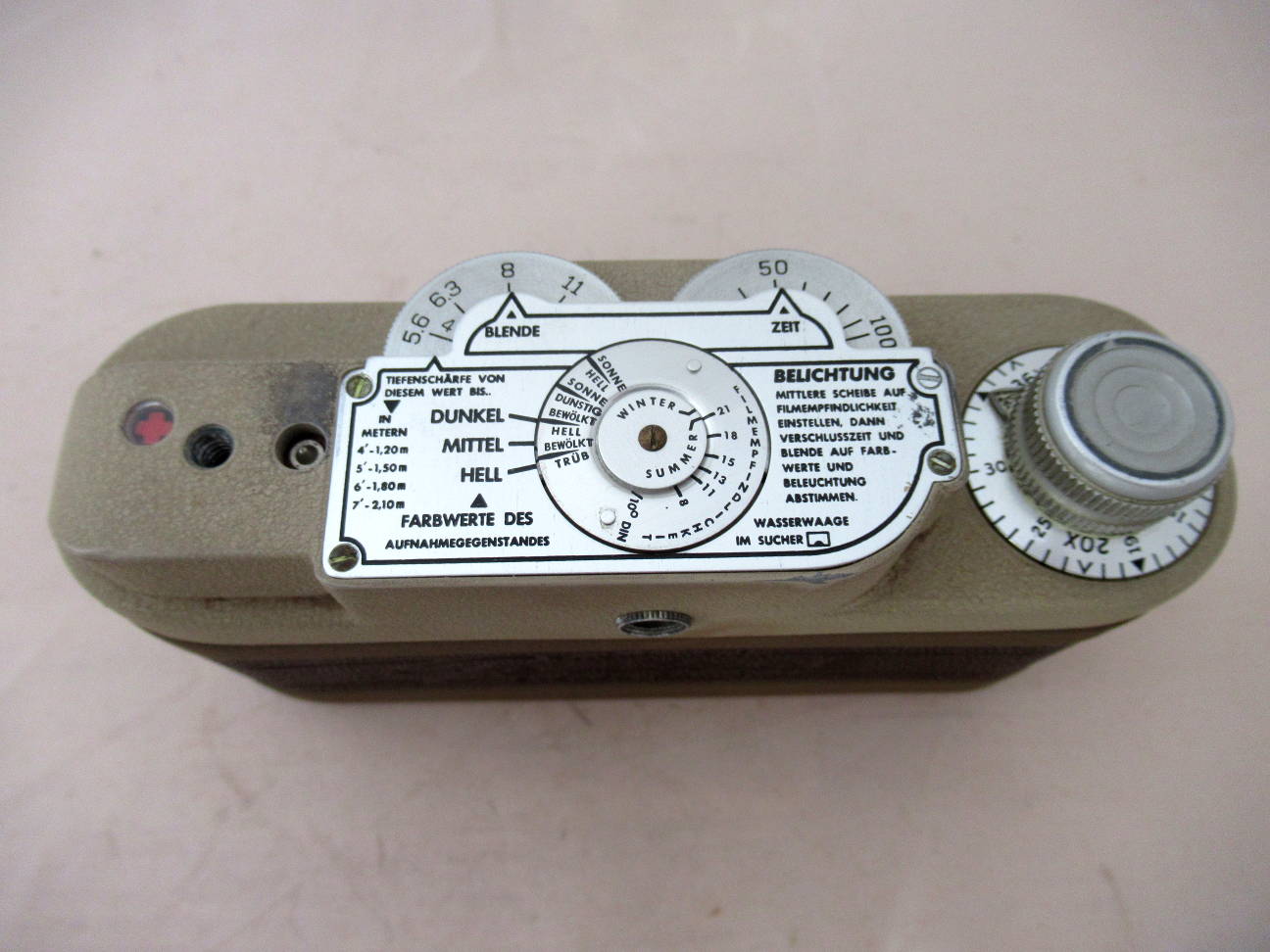
Camera
top again. Set to F8 and 1/50s, it's good for light colour tones in a
heavily clouded sky to dark colour tones in light clouds.
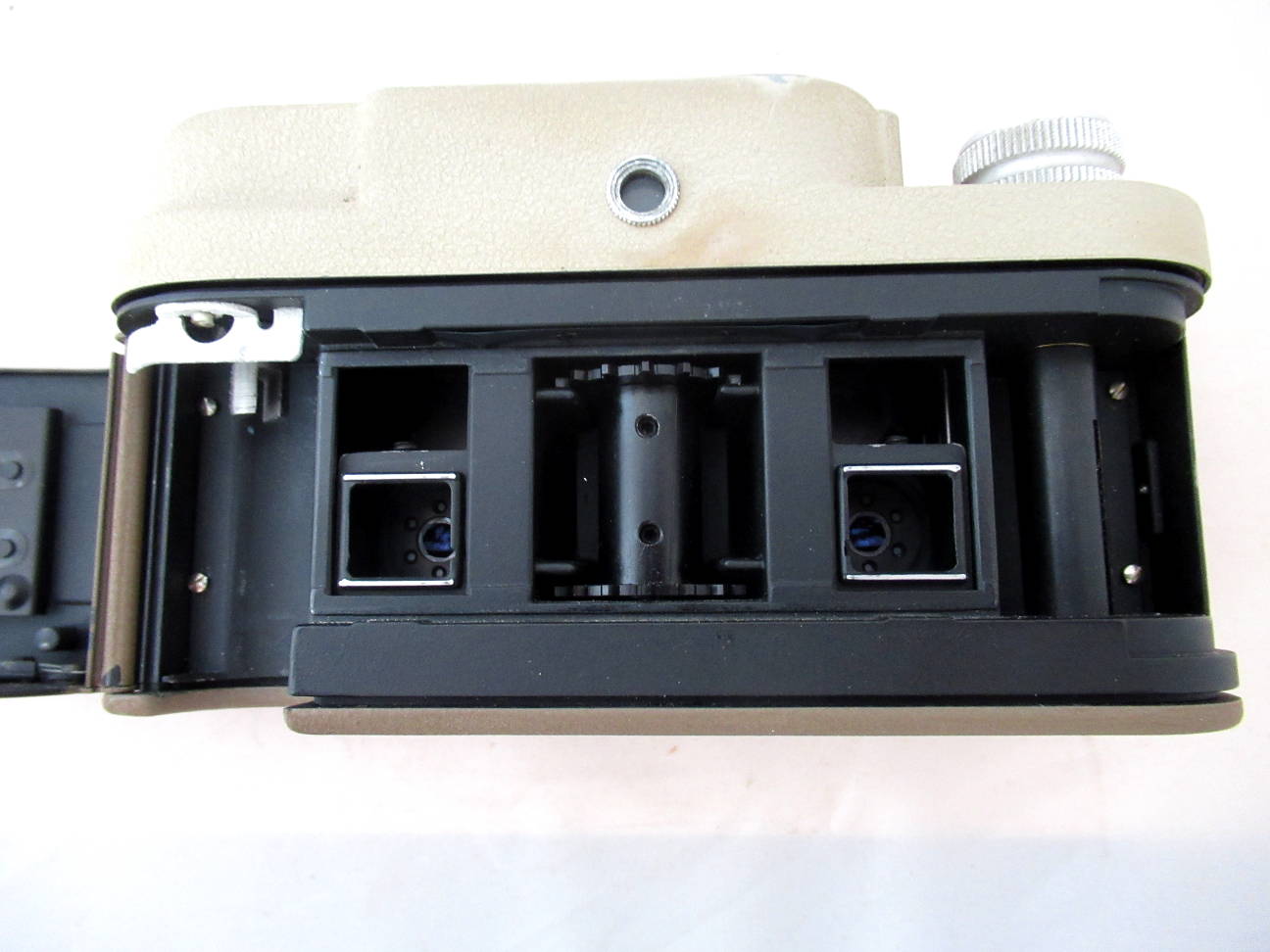
Camera back open. Exposure windows at the bottom, "A" setting.
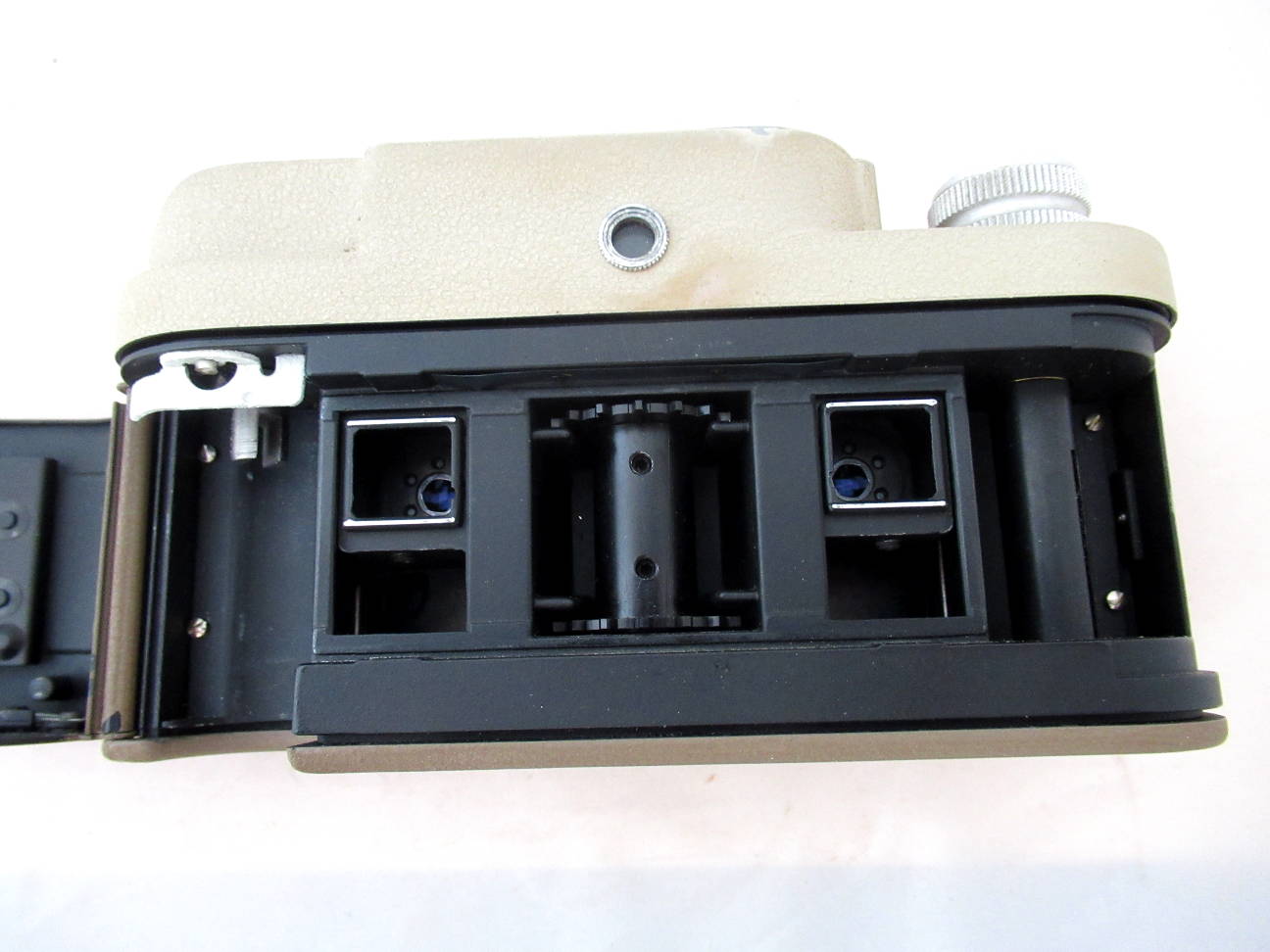
Camera back open, "B" setting.
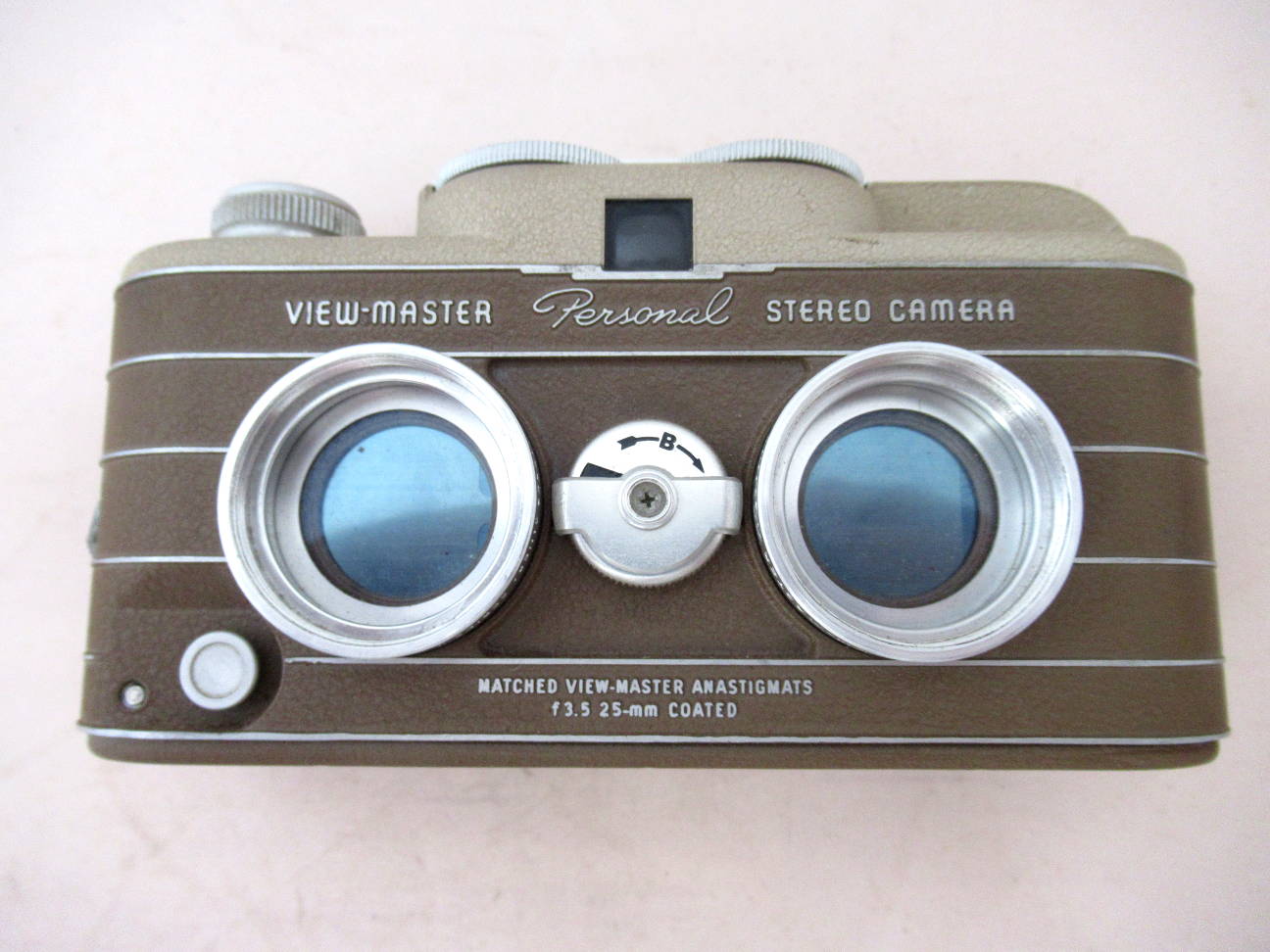
Camera front, set to "B".
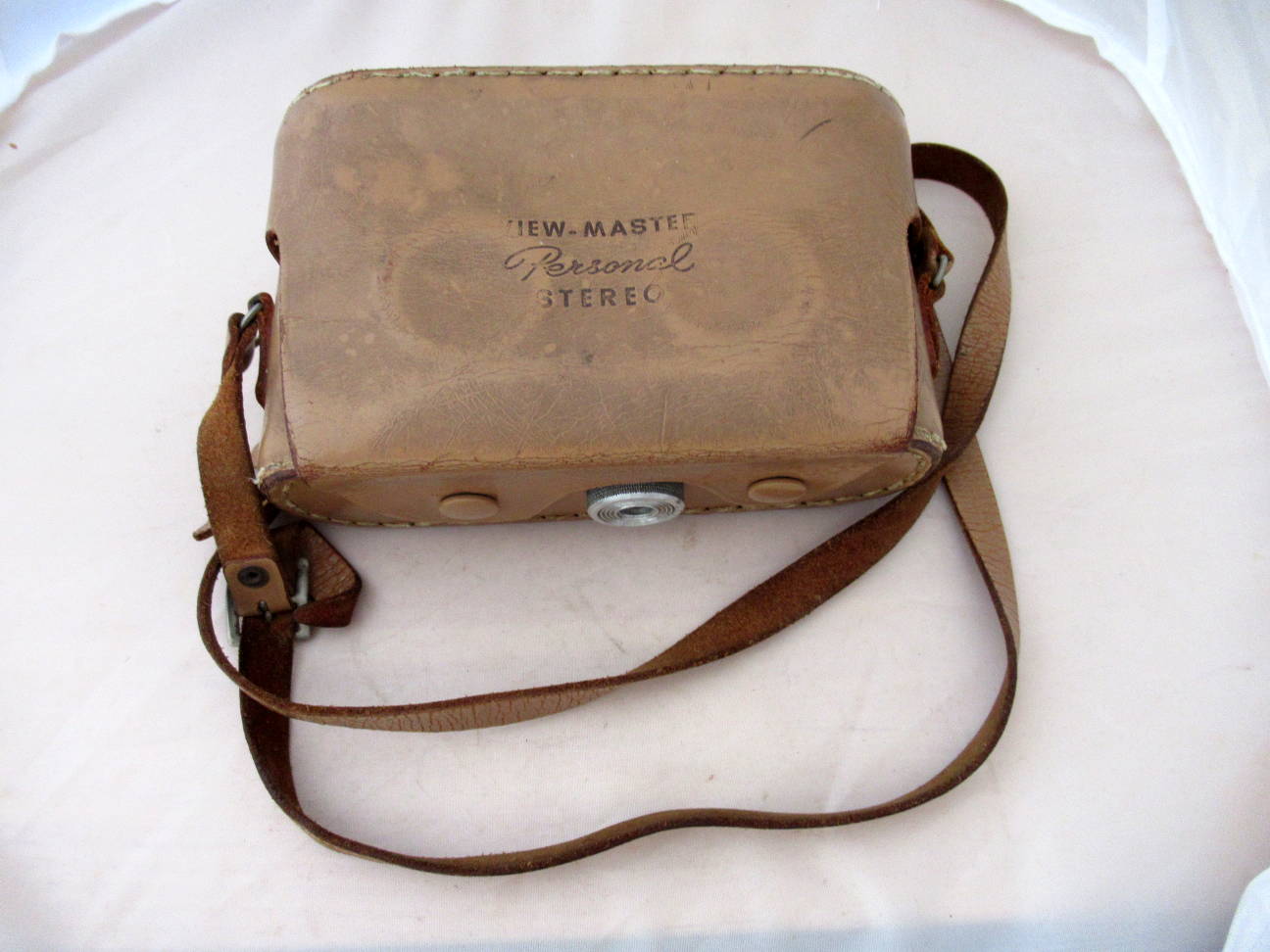
Leather case.
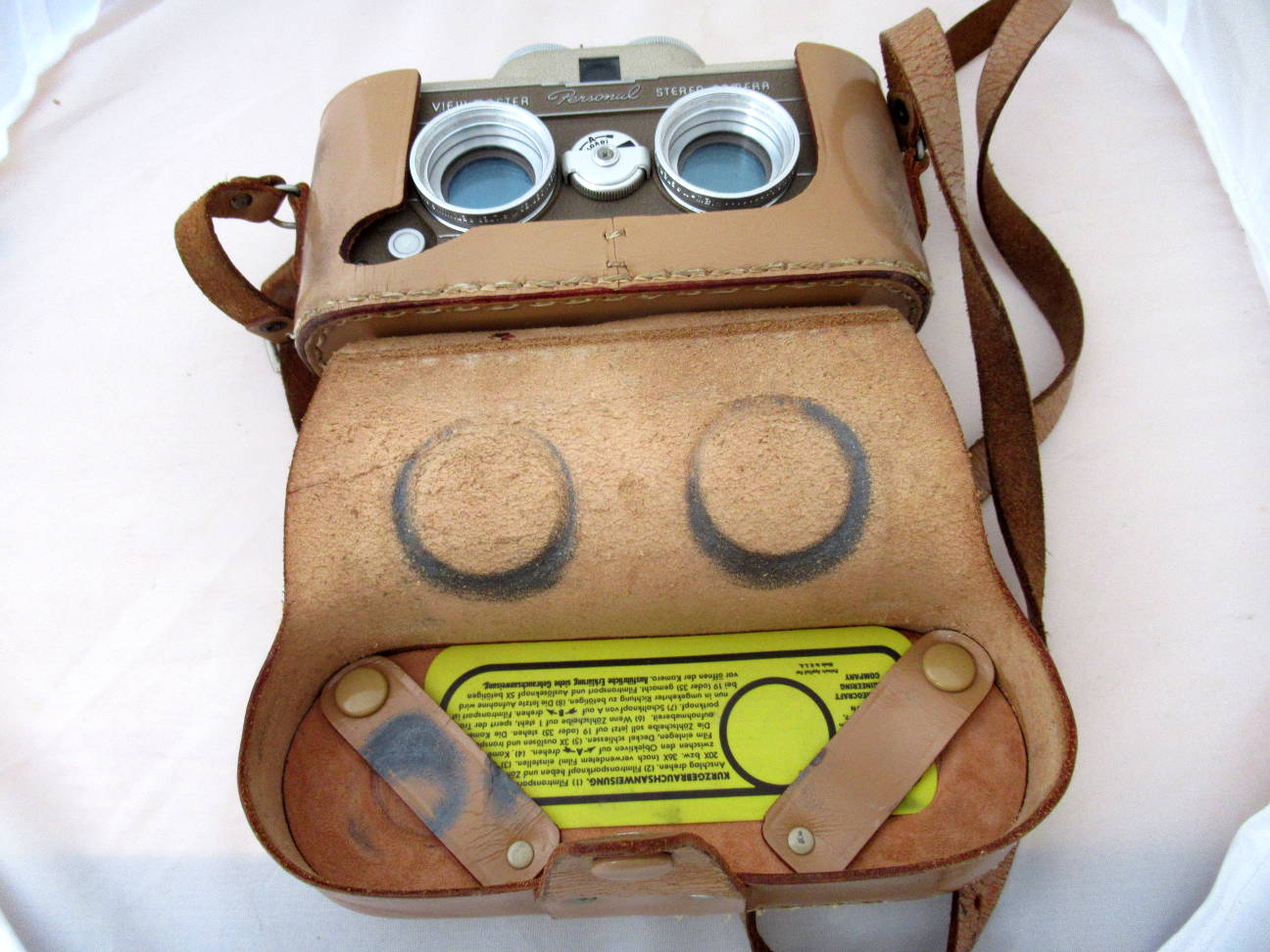
Case open, instructions again.
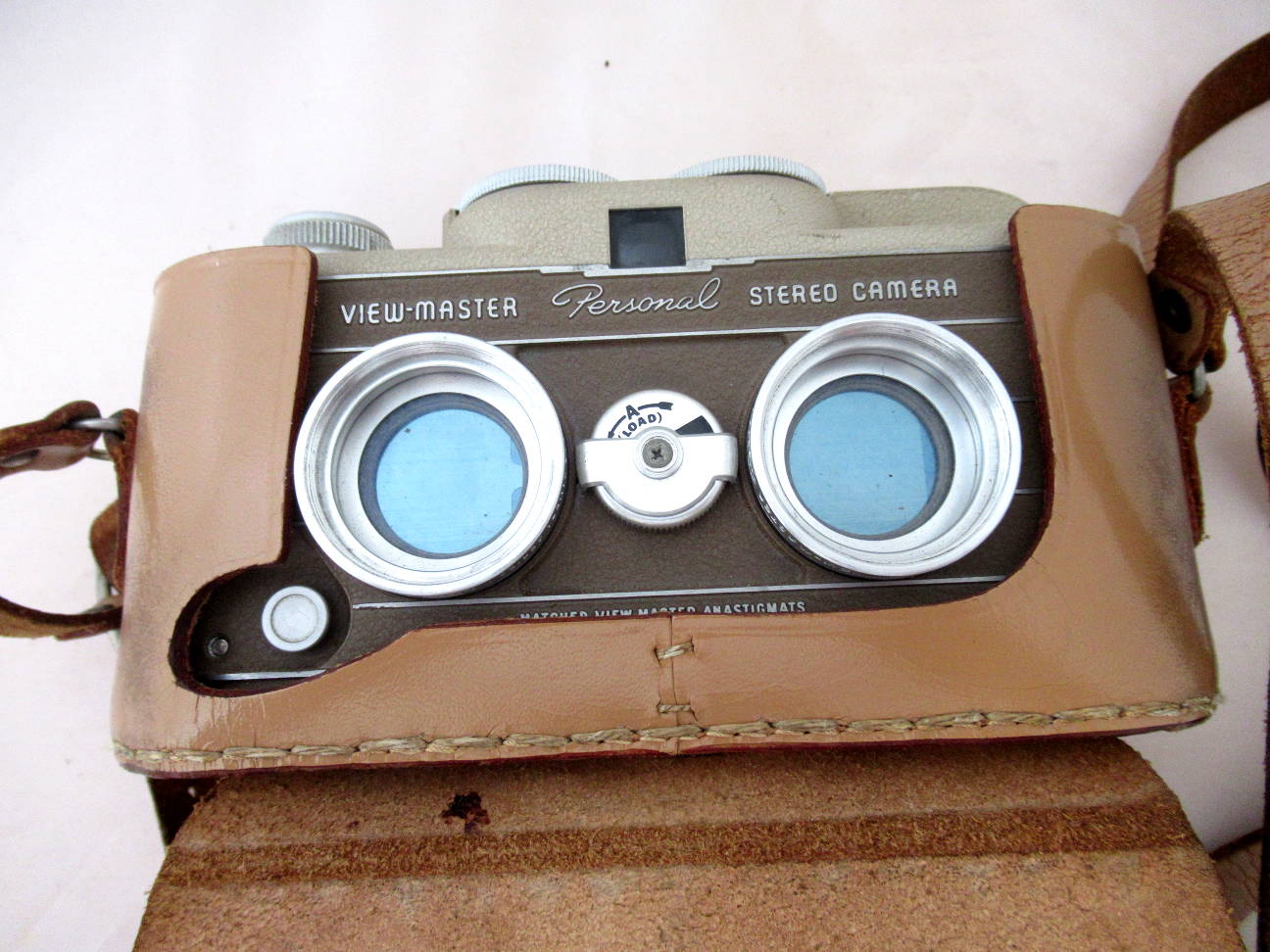
The leathe case can be used as half case.
The
viewmaster viewers are easy to find. However there are no empty reels
any more, let alone the cutter you need to get the correspondig tiny
pieces of film out of the strip. If you want just to check whether your
photos are fine, I found a cheap solution.
All you need is a Simplex viewer, from anothe 3D system, also easy to find.
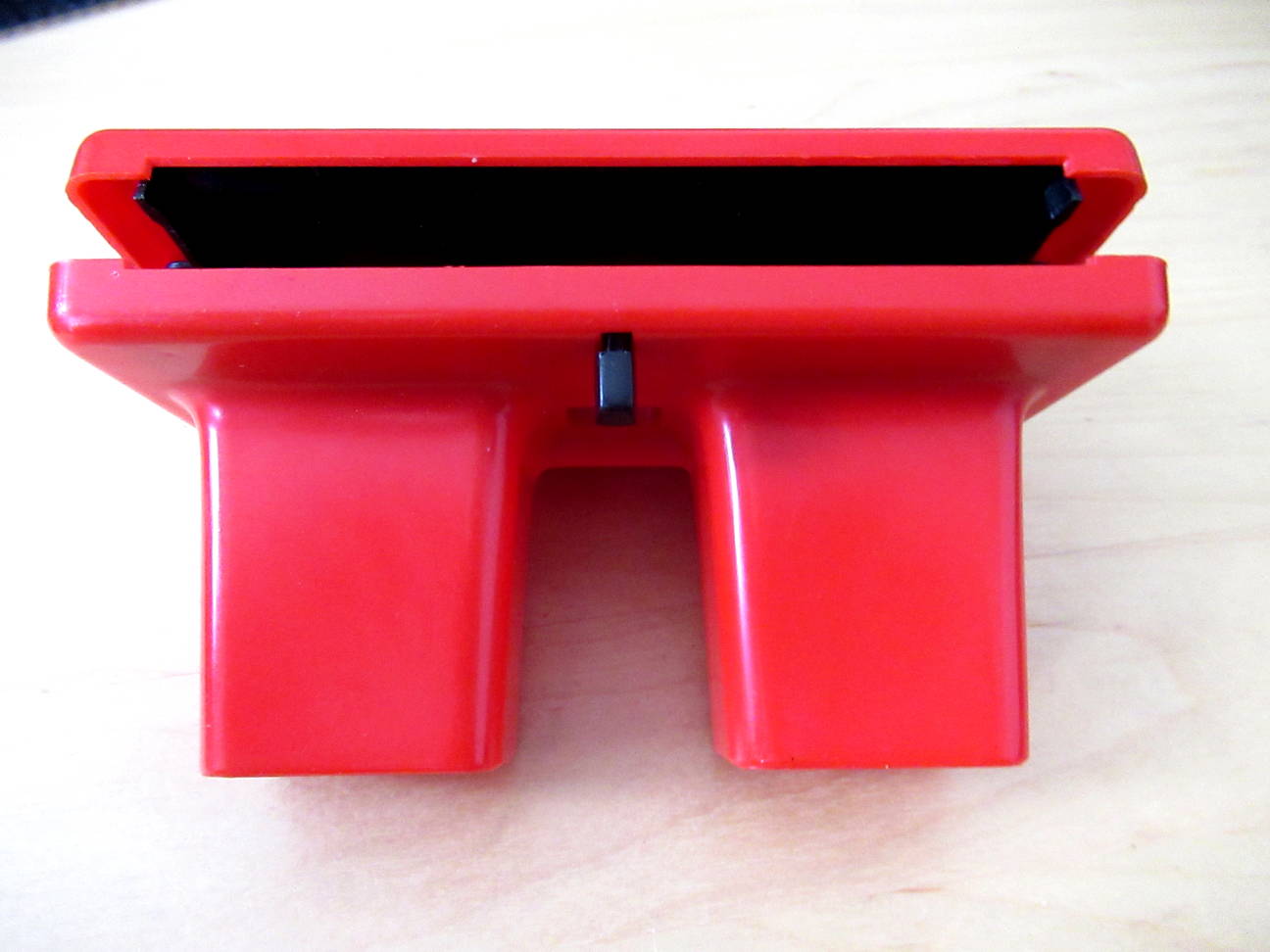
The Simplex viewer...
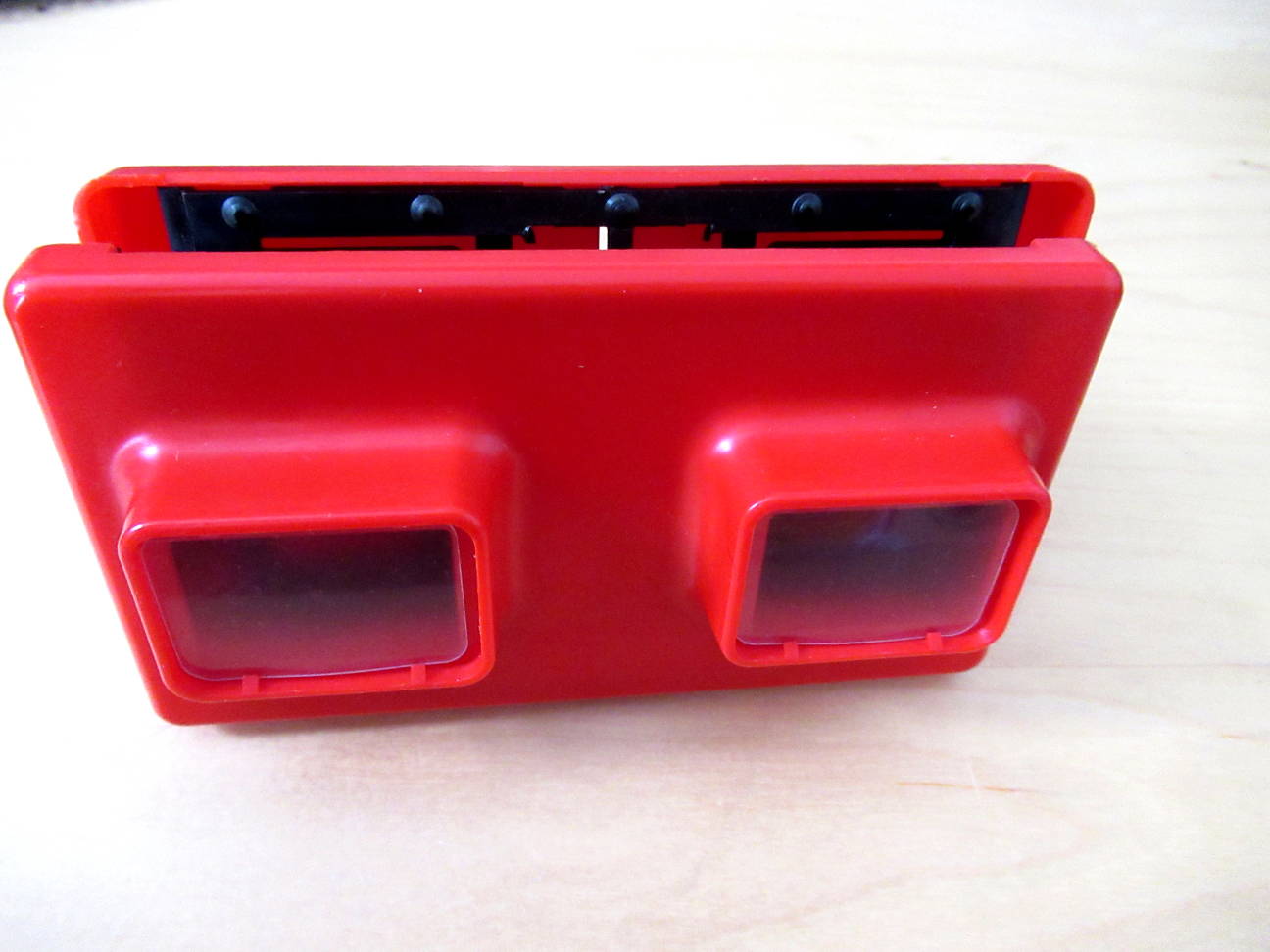
... is only clipsed, not glued.
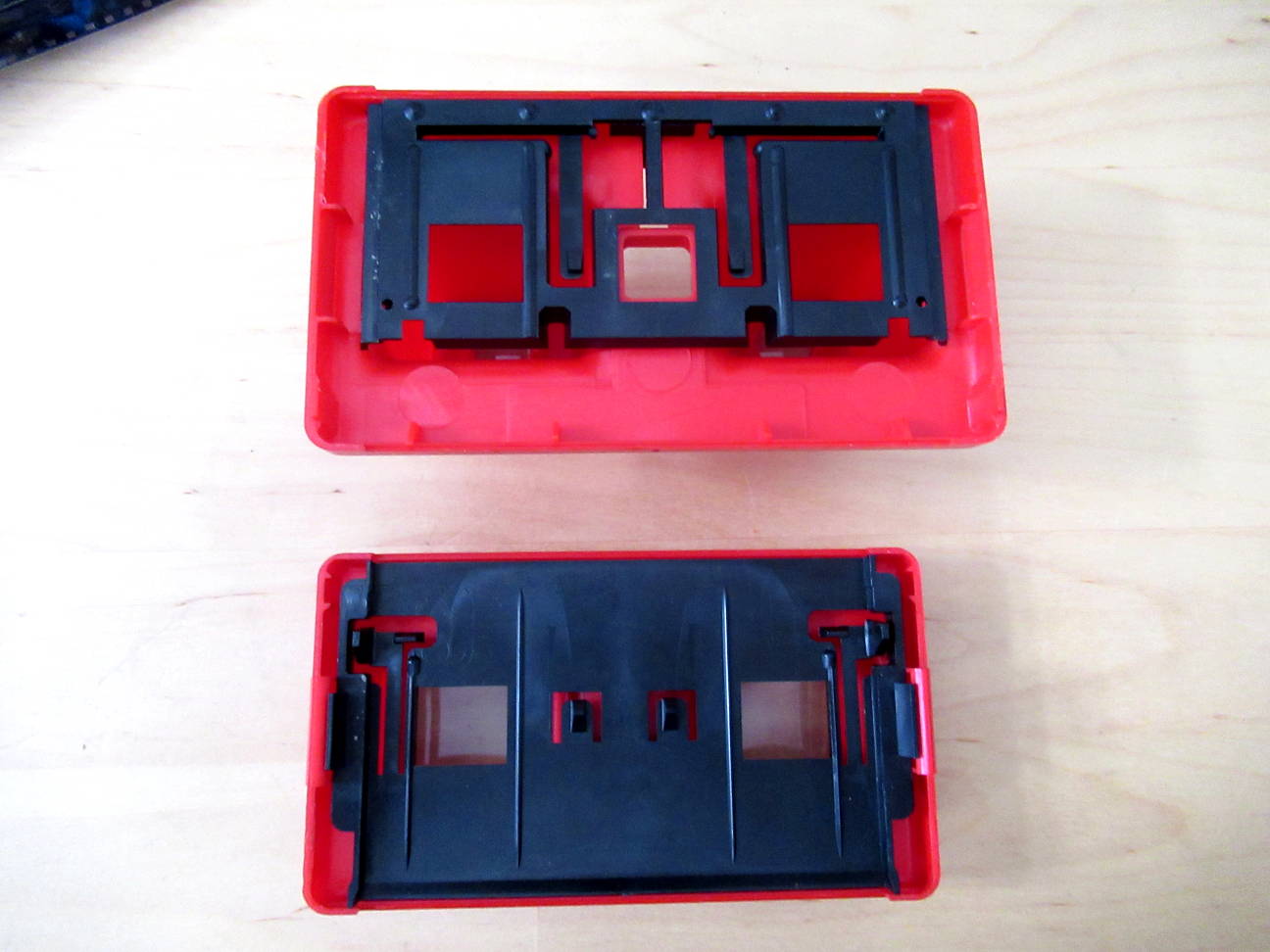
You can open it with a pocket knife.
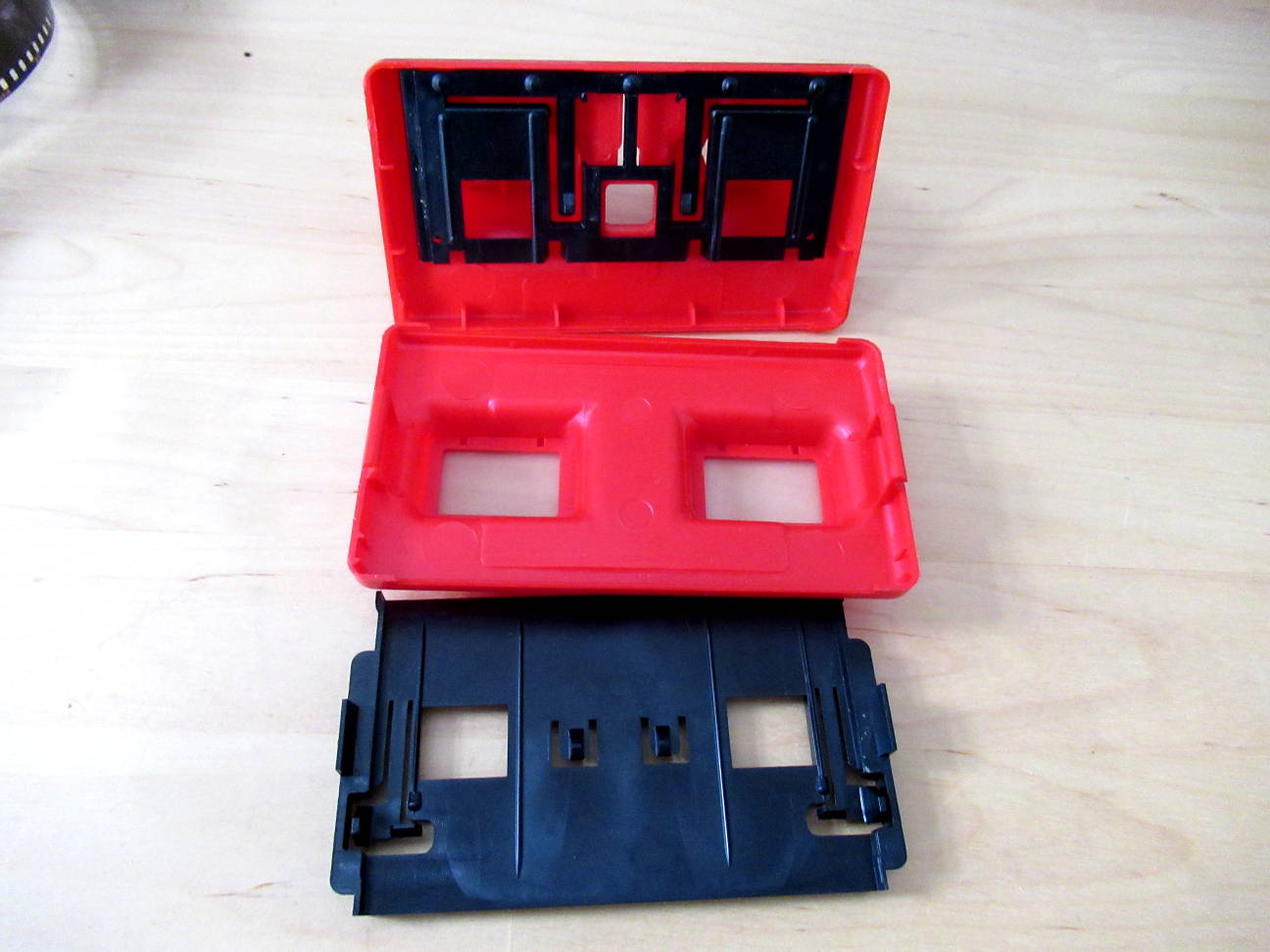
Take out the back mask, keep it, if you want to re-use the viewer as a Simplex again
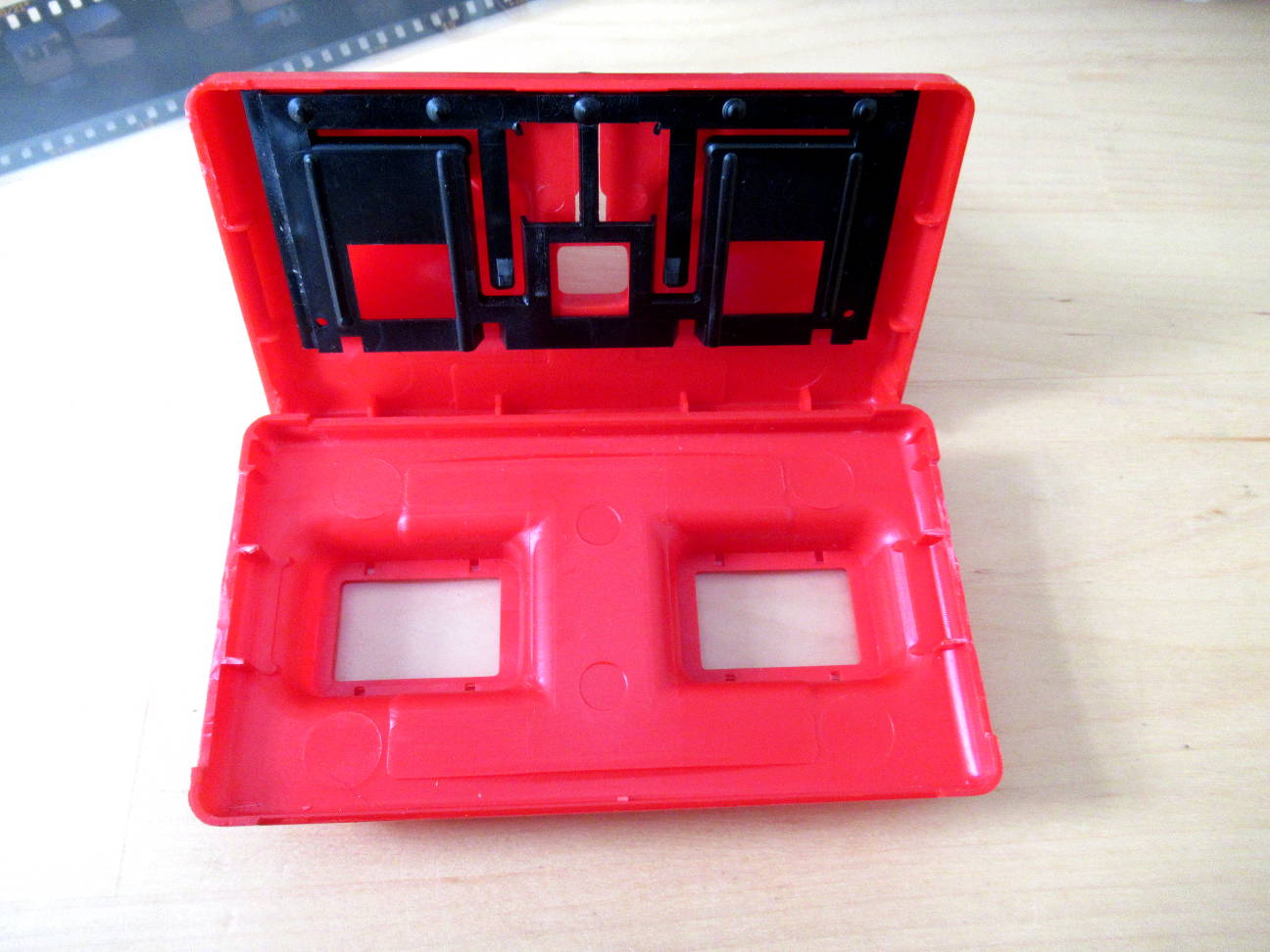
With
a pocket or exacto knife make a groove for the film strip. You have to
cut away the clipses. The grooves have to be large enough to see the
upper and the lower part of the strip.
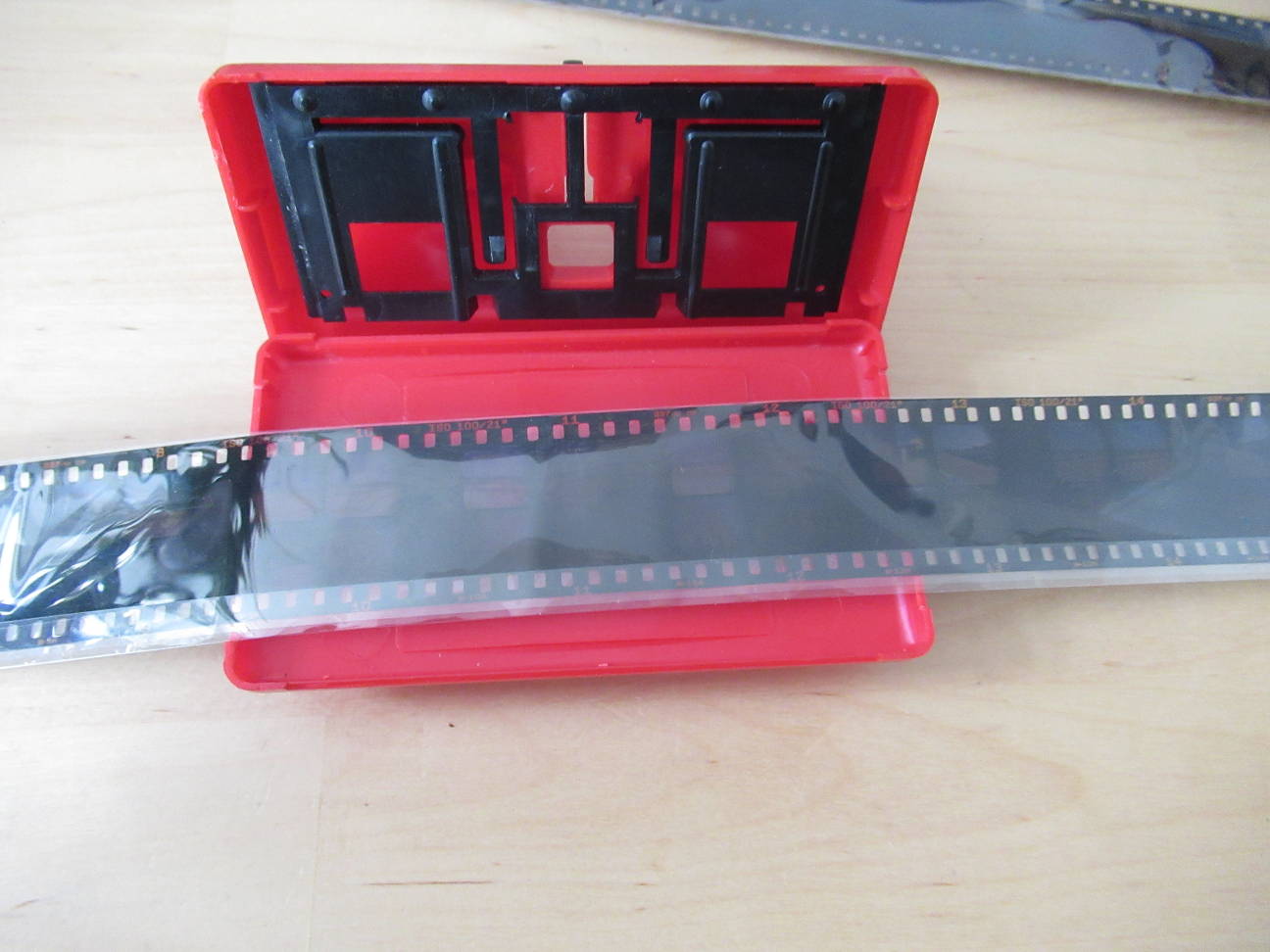
If your film strip is protected by clear plastic, leave it on, it protects from scratches.
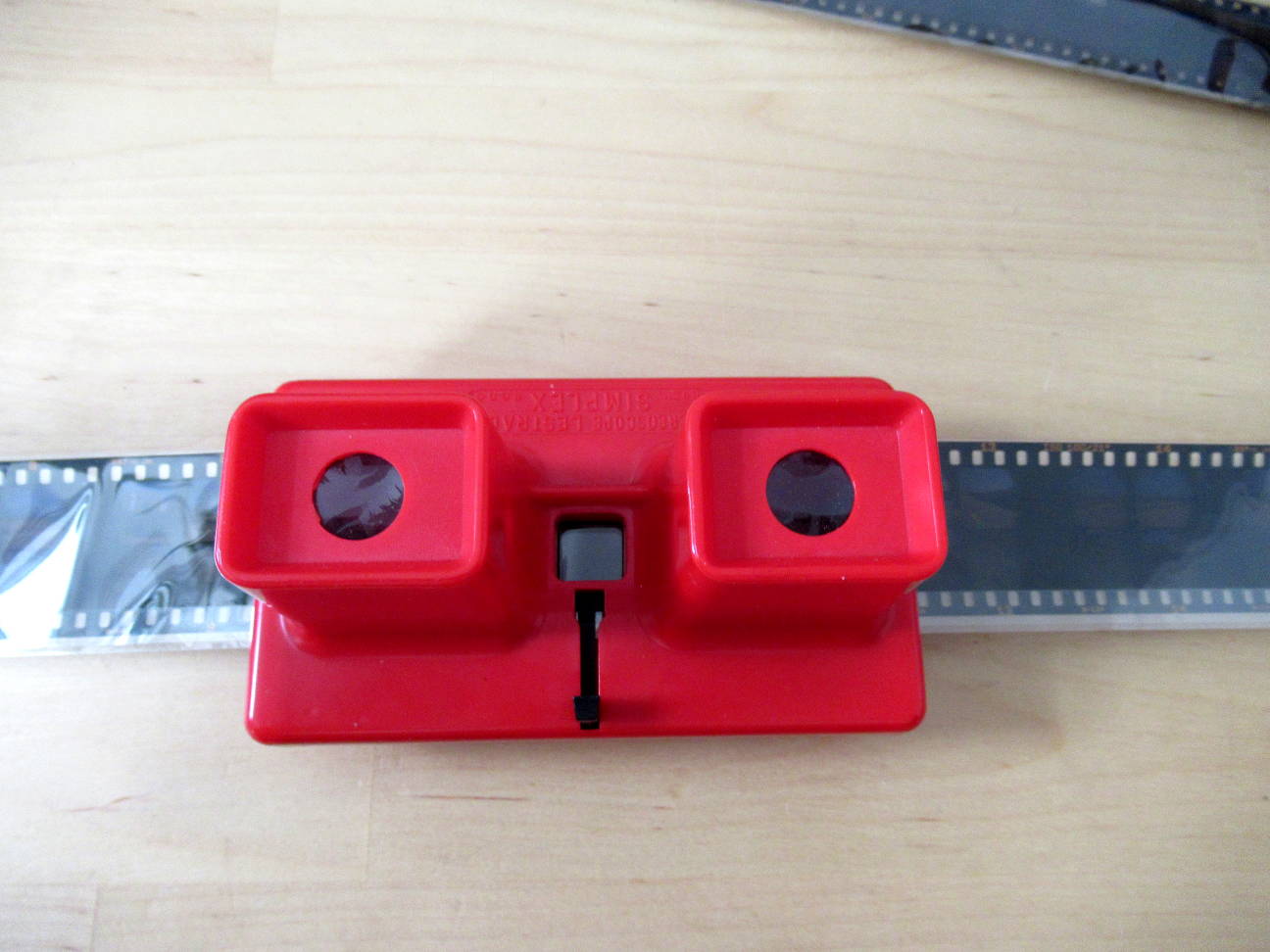
Done. secure with tape or simply hold the 2 parts together.
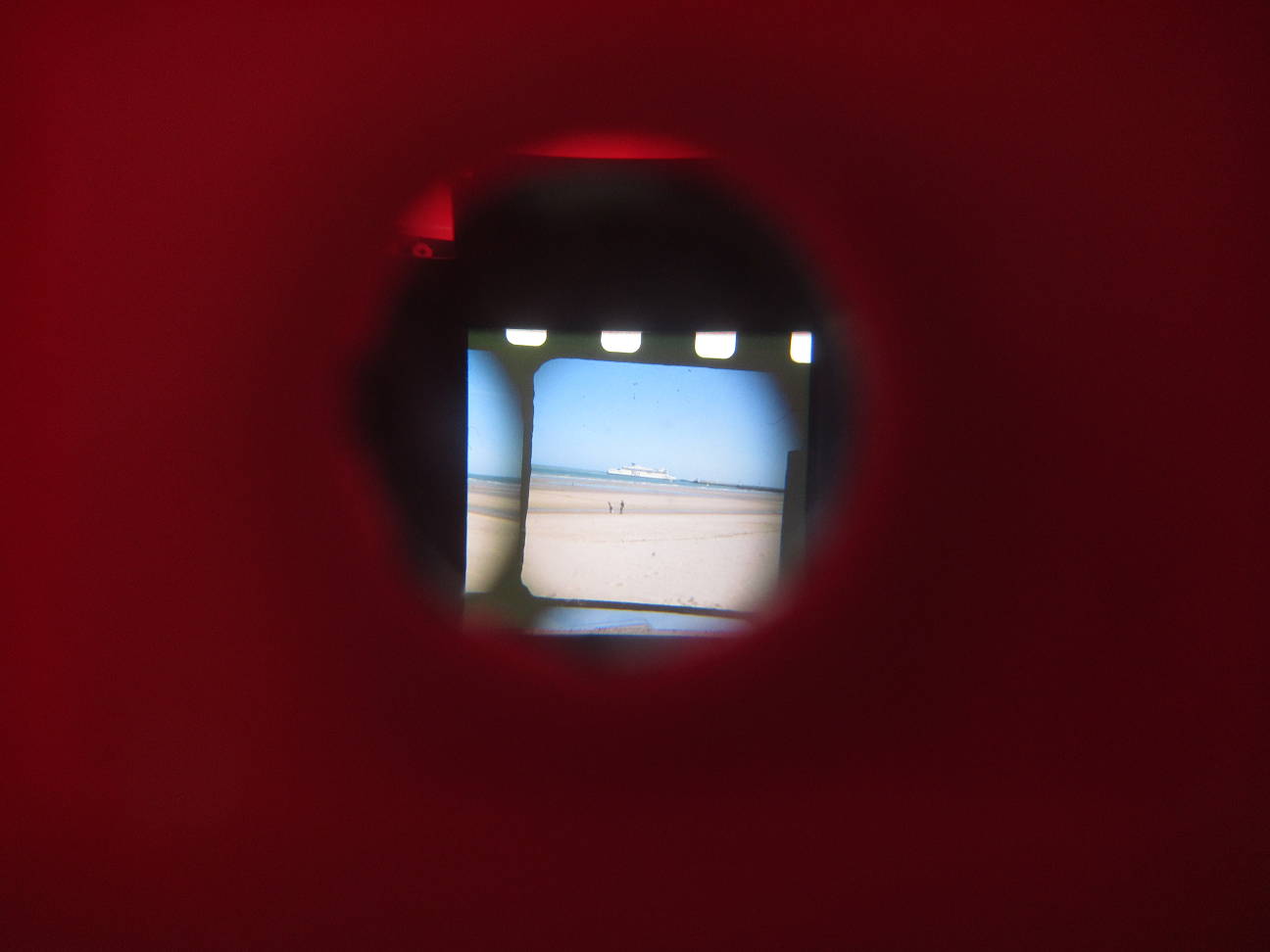
The pictures have a bit of vignette, which would partly be cut by he Viewmaster cutter.
This
solution is quite DIY, but you can check your film at least. For a good
3D view you will have to hold the viewer 1 cm or 2 away from your eye.